If you're looking for a Network Attached Storage (NAS) device then I highly recommend looking at Synology. I purchased my DS1513+ back in 2012 along with five 4TB drives. The total cost at the time was around £2,500 including drives.
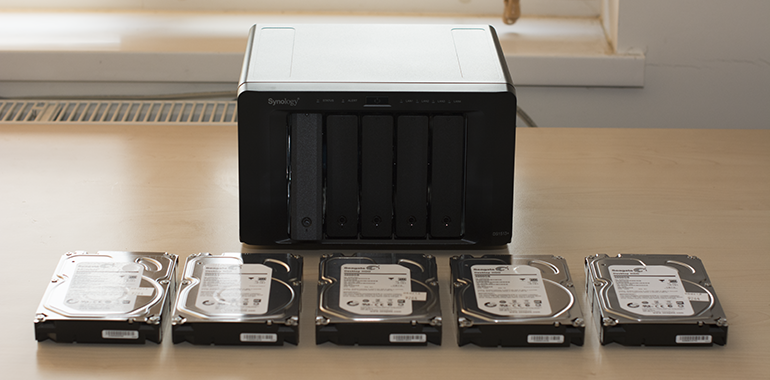
What can it do?
An awful lot! Synology have developed their own DSM (DiskStation Manager) which is an intuitive web-based operating system which is extendable through it's own app store that they call Package Manager.
A quick list of key functionality I use my Synology NAS for...
- Git server
- Docker
- Backup Server
- Cloud Sync
- Surveillance Station
- Video Station
- Photo Station
DSM - DiskStation Manager
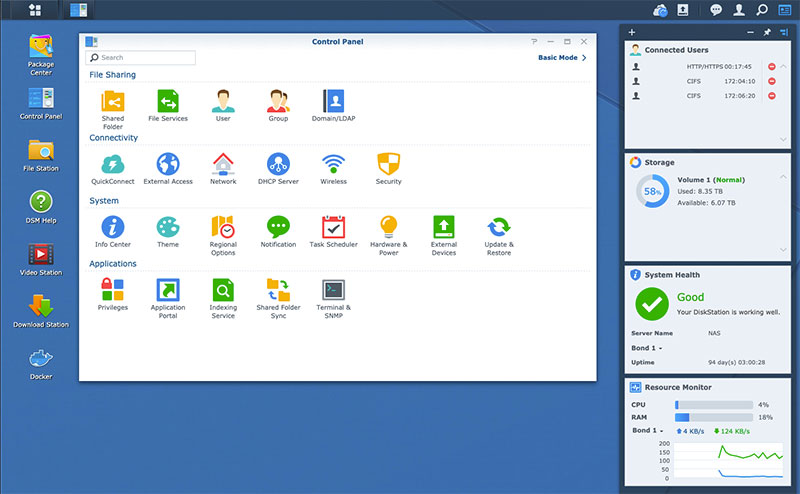
The Synology DSM OS is excellent. The web based UI is a pleasure to use and reliable. Updates are fully automated and in over seven years as I write this I have never experienced any problems with updates.
To extend functionality, DSM sports its own app store known as the Package Manager. Synology have developed many useful apps themselves plus third-party developers can also publish apps to the store.
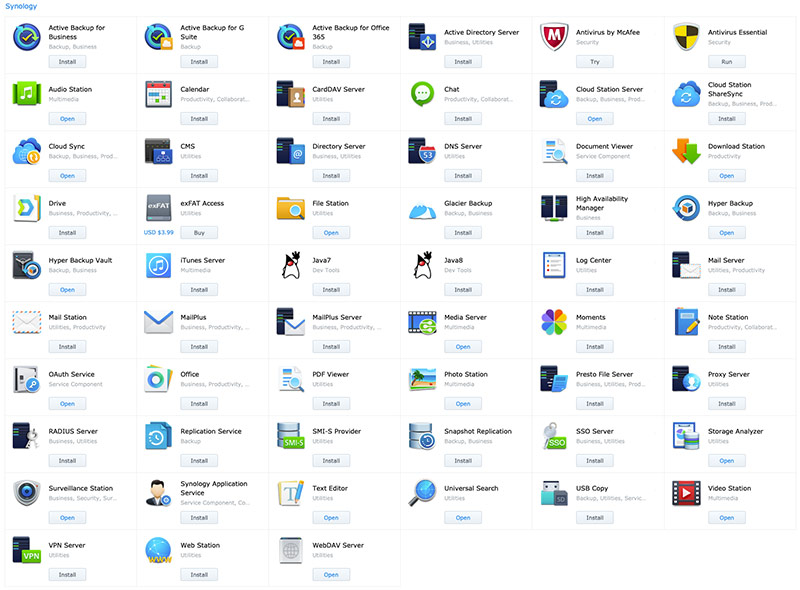

Hybrid-RAID
There are several incarnations of RAID (Redundant Array of Independent Disks) like RAID 0 which mirrors data and RAID 5 which stripes data across drives with a checksum. Each RAID type has its own pros and cons as regard to data integrity versus speed of reads and writes.
An interesting option available is Synology Hybrid RAID (SHR). This is basically RAID 5 with the added advantage that you don't need to use the same capacity drives in the array so you get data protection with 1 drive fault tolerance. I opted for this option even though all my drives are the same capacity thinking I may take advantage of the feature at some point in the future when upgrading or replacing drives.
About two weeks after purchasing my drives one of them failed. I always order spare drives when setting up arrays so I hot swapped the faulty drive and figuring out how to rebuild the array was a breeze. I launched Storage Manager and kicked off the rebuild which worked seamlessly. I'm happy to say this is the only drive failure I have experienced to date. Not bad for seven years constant use.
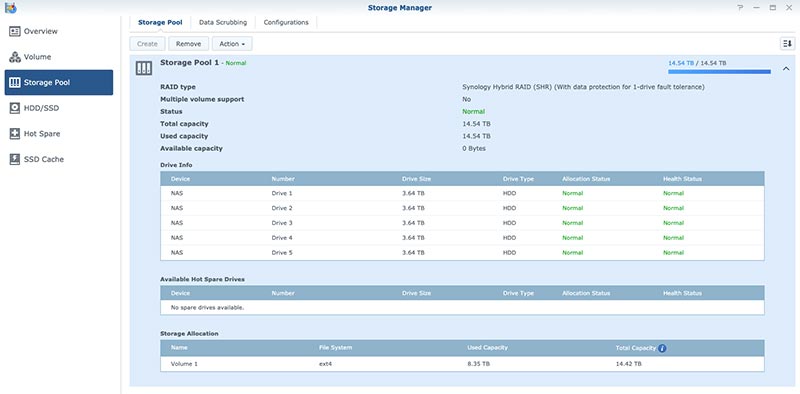
The drives I went with were Seagate Barracuda 4TB - ST4000DM000. At some point I will update the drives to SSD's.

Let's explore the key functions I use my Synology NAS for...
Git server
Some developers heads exploded when Microsoft announced it was purchasing GitHub for $7.5 Billion in June 2018. As Twitter exploded with cry's of "Microsoft will own my code!" I gently patted my Synology NAS with a wry smile.
The new Microsoft isn't as scary as when it was steered by Steve Ballmer. Microsoft v2 is openly embracing the Open Source movement and the acquisition of GitHub will probably bring great benefits to GitHub users. This is already happening as GitHub now offers unlimited private repos.
Having your own private git repo server is a nice addition to any development environment though and it was easy to setup on the Synology. I keep a stash of all my bare git repo's on my NAS which is great for checking code in and out at lighting speed over my office LAN as I switch between my main development workstation and laptop. Somewhat ironically, I started using GitHub for public repos after Microsoft acquired it, mainly for boilerplate code and quick start templates. I use Azure DevOps for off site backups of my private code repos and CI/CD pipelines.
Docker
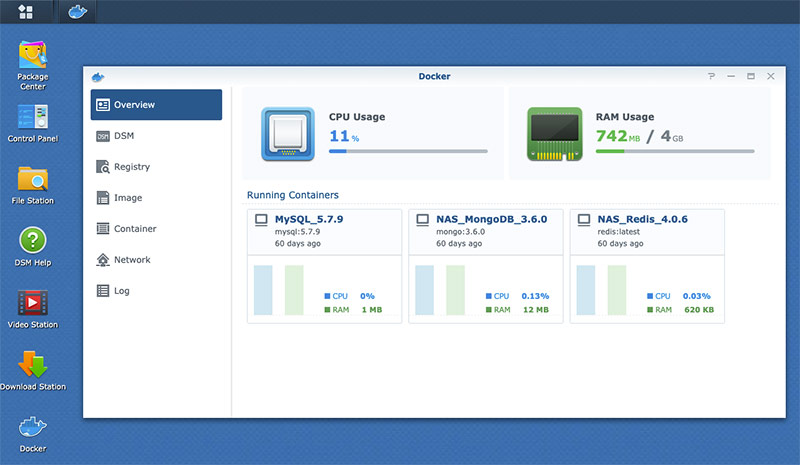
Running Docker containers is great for rapidly standing up apps, frameworks and databases without polluting your development environment. I have a Docker Quick Start post that shows how to create a simple Hello World app and run it in a container if you're not familiar with Docker.
For long running containers my Synology is a perfect fit. I upgraded the memory from 2GB to 4GB for this specific purpose so I can run larger containers. When running database's within containers I mount a shared volume from the NAS into each running container. This gives databases and container data RAID fault tolerance which is cool.
Backup Server
Obviously the Synology NAS is ideal for RAID protected backups. I wrote a BASH shell script so I can type nas backup in any folder to create an instant backup on my NAS. I use Git for source code but this is sometimes handy when working on other stuff I don't want to check in. Here's the script in case anybody finds it useful. Just modify the $vars to match your local volumes environment...
# Backup PWD to Backups > PWD > _Date_Time
if [[ "$1" = "backup" ]]; then
clear
srcPWD=$PWD
srcFolderNameToBackup=${PWD##*/}
destFolderName=$(date +"%Y%b%d-%H-%M")
destBackup=${local_mount_point_backups}/quick/${srcFolderNameToBackup}/${destFolderName}
echo "${cyan}Backing up ${srcPWD} to ${destBackup}/${destFolderName} ${normal}"
Mount_Share backups
cd ${local_mount_point_backups}/quick
if ! ls | grep "${srcFolderNameToBackup}" > /dev/null; then
mkdir $srcFolderNameToBackup
fi
cd $srcFolderNameToBackup
if ! ls | grep "${destFolderName}" > /dev/null; then
mkdir $destFolderName
fi
# Copy using rsync
rsync -av --progress $srcPWD/ $destBackup --exclude-from='/volumes/data/repos/generator-devenv/bash/excludeFromBackups.txt' # srcPWD needs trailing / to stop src folder being created
echo "${green}Completed${normal}"
exit 0
fiCloud Sync
Synology Cloud Sync lets you sync folders and files with multiple public cloud services. Excellent for offsite backups! Cloud Sync automatically produces off-site backups as soon as I check code into my NAS Git repos. You can never have enough backups and I have probably over engineered my backup strategy but here it is...
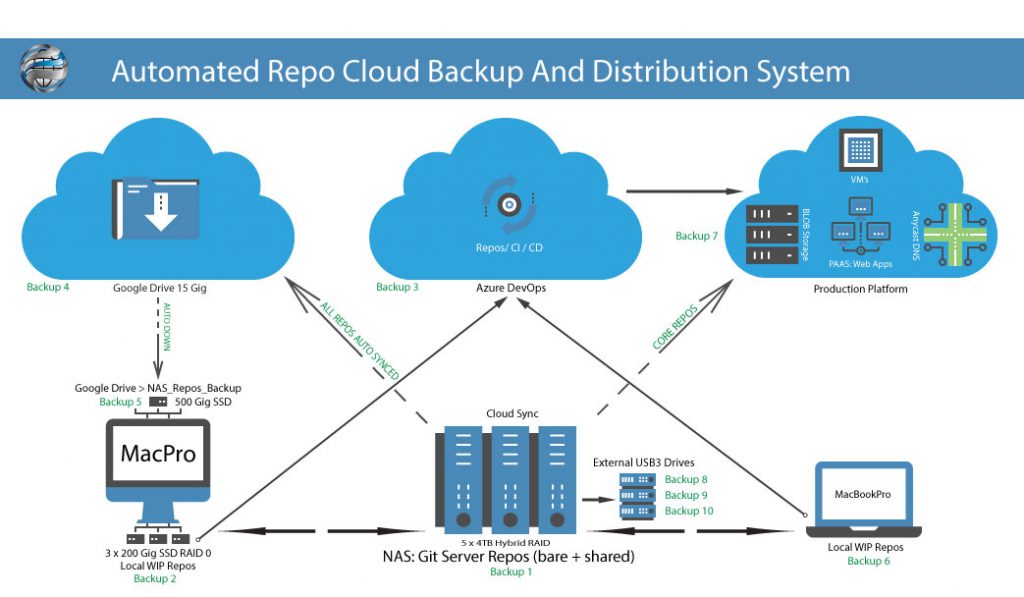
Surveillance Station
Surveillance Station acts as a central security hub for web cams. I have four permanent hardwired cameras in our home surveillance set up. One looks out upon our driveway, one looks inward upon my home office and two cover the main house. I also have a roaming wireless camera that I hook up when we leave the house unattended for long periods.
Surveillance Station can be set to record continuously, at specific times during the week or only when motion is detected. It can ping alerts via text, push notifications or email when it detects movement. I have mine configured to alert me at certain times through the day and night to save being bombarded with alerts. I have also set zones within the field of view of each camera to detect movement on specific areas which is useful for protecting windows and doors.
The timeline feature makes it easy to review footage taken on any specific day at any specific time. This can be done via the web interface or free mobile app. The live view feature can also be accessed via web or mobile app if you want to access when out and about.
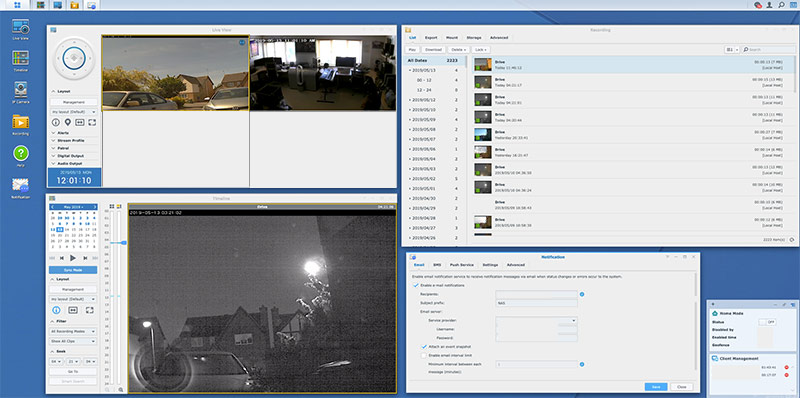
You do have to license each camera for use with Surveillance Station. Licenses are around £50 per camera which is steep as you can buy half decent web cams for less than that. Multi-pack licenses are available which apparently offer better value for money but in my opinion you shouldn't need to license your own cameras at all. This functionality should be provided free.

Video Station
Video Station is a bonus for any movie buff. It's a central store for all your movies, TV shows and home videos. You can rip all your blu-ray movies and stream them direct to all your devices. If watching movies via phones, tablets or desktops is your thing then Video Station won't disappoint but it really shines when hooked up to a TV. My TV is connected to our home LAN via ethernet which is 100% stable, i'm not sure about the stability of watching movies over WiFi. We also have a few Apple TV's dotted throughout the house so we can easily enjoy a movie in our lounge, bedroom or home gym whilst on the treadmill. We usually consume movies via the DS Video Apple TV app which provides instant access to our entire library.

When Video Station detects a new movie it automatically sets about indexing it. Video Station instantly searches the internet and pulls down all relevant information for the movie. This includes movie genre, synopsis, director, cast, run time and even the official movie poster. 99% of the time this works seamlessly and perfectly. On the odd occasion when it misidentifies a movies attributes it's easy to fix up the information manually. This results in your movie collection looking awesome on any device without you having to spend time categorising anything.
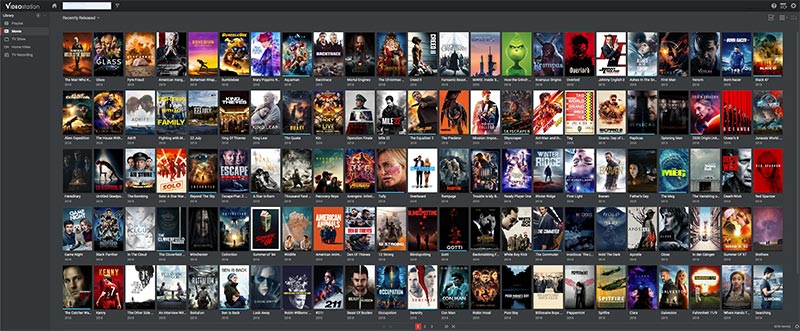
We use Apple TV's Siri to take advantage of Video Stations excellent indexing. From the Video Station Apple TV app, we can simply hold the Apple TV's remote up and say "Al Pacino" and in a blink of an eye, all of Pacino's official films posters from within our library will magically appear on our TV. We can also say "sci-fi" or any other movie genre and a new browsable list will appear. One click and we drill down into the details of the film and you can instantly start streaming the movie with another. If you want to watch a film on a mobile device then you can download directly to your phone, tablet or laptop before you head out to save bandwidth.
Photo Station
Photo Station is perfect for archiving photos and images. Using the DS Photo mobile app you can quickly select all your photos and archive them over the air direct to your Synology NAS. You can access your archived photos via the same app, a web UI or Apple TV app.
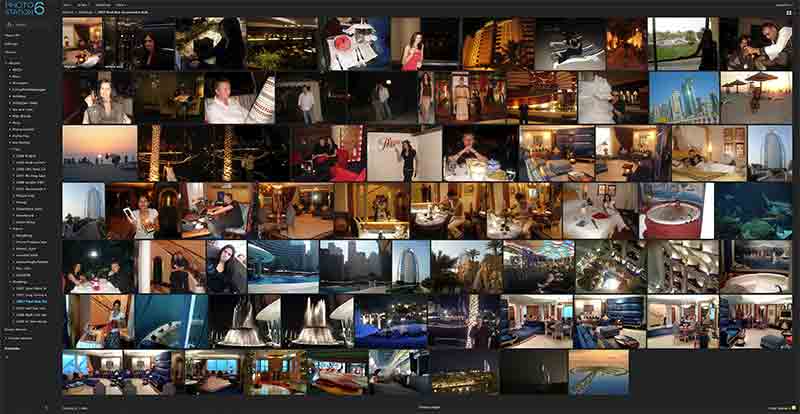
You can easily publish albums online to showcase your work. Full image metadata can be displayed so it's an ideal solution for professional photographers.
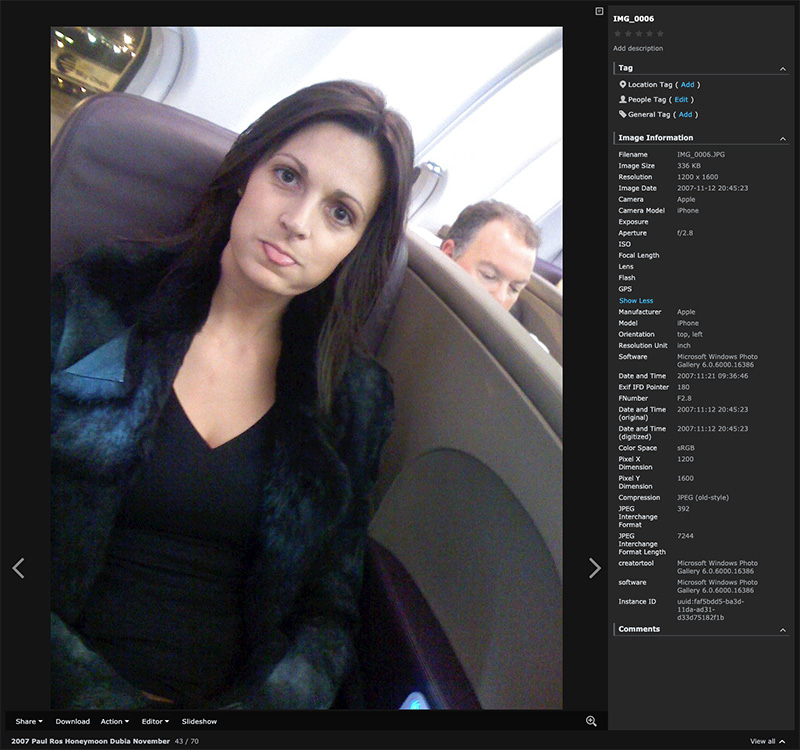
Link Aggregation
Link Aggregation provides network redundancy and traffic balancing. It can increase the bandwidth of your NAS by aggregating multiple network interfaces. Once your LAN interfaces are combined you will see a new interface named Bond. I used all four ethernet ports on my NAS to provide 4000 Mbps, Full duplex, MTU 9000 connectivity.
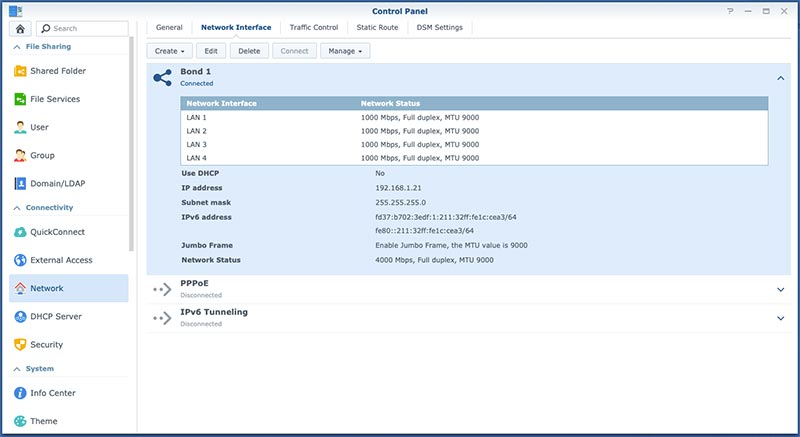
Conclusion
The Synology DS1513+ is an ideal home and small business NAS solution. It offers everything you would want from a Network Attached Storage device and more. The Synergy between hardware and software is that akin to the quality that Apple provides. It's unobtrusive and runs silently for the most part. The cooling fans run silently when set to silent mode but occasionally I can hear a slight buzzing sound originating from the drive bays. I fix this by lightly nudging the drive bay with my finger and it disappears. I expect this will be resolved permanently when I upgrade the drives to SSD.
The DSM OS (Disk Station Manager Operating System) is linux based and rock-steady stable. The accompanying web, mobile and TV apps are user friendly and responsive.
Would I buy another one? Absolutely.
Full Spec
- Performance
- CPU: Dual Core 2.13GHz
- Memory : DDR3 2GB (Expandable up to 4GB)
- Capacity and Drives
- Internal HDD/SSD : 3.5" or 2.5" SATA(II) X 5 (Hard drive not inc.)
- Max Internal Capacity : 20TB (5 X 4TB HDD) (Capacity varies by RAID type)
- Hot Swappable HDD
- External HDD Interface : USB 3.0 Port X 2, USB 2.0 Port X 4, eSATA Port X 2
- LAN : Gigabit X 4
- Link Aggregation
- Wake on LAN/WAN
- System Fan : 80x80mm X2 (Redundant with failover functionality)
- Wireless Support (dongle)
- Environmental
- Noise Level : 22.1 dB(A)
- AC Input Power Voltage : 100V to 240V AC
- Power Frequency : 50/60 Hz, Single Phase
- Power Consumption : 51W (Access); 25.75W (HDD Hibernation);
- Operating Temperature : 5°C to 35°C (40°F to 95°F)
- Storage Temperature : -10°C to 70°C (15°F to 155°F)
- Relative Humidity : 5% to 95% RH
- Maximum Operating Altitude : 6,500 feet
- Certification : FCC Class B, CE Class B, BSMI Class B
- Support for: VMware vSphere 5.1 with VAAI Support, Microsoft Hyper-V, and Citrix XenCenter
- Support up to 100,000 ADS Users and 100,000 ADS Group Accounts
- Screw-less drive bays
- Dimensions (HxWxD) : 157 X 248 X 233 mm
- Weight : 4.25Kg
- 3 year parts and service warranty


